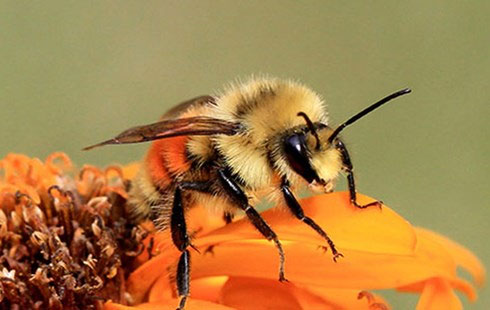Bees pollinate on Mars: Can you believe it?
To improve the food source for astronauts when they set foot on Mars, bringing the world's hardest animal to the planet is something that scientists have paid attention to.
The results of a new study published in Gravity and Space show that bumblebees - a large species of predominantly hairy bees living in North America - can find food at a lower atmospheric pressure threshold. 52 kilipascals (kPa) - parameters announced by NASA are ideal for extraterrestrial organisms.
That said, the bumblebee is fully capable of pollinating plants on Mars, enriching food sources for astronauts on extended journeys.

'Traveling to Mars takes a few months, so space agencies have been digging into how to produce clean food on long journeys,' said Professor Peter Kevan at the University. Learn Guelph, Canada.
During the study, a nest of about 40-50 bees was placed into a wide box, then exposed to conditions ranging from 30 kPa to 97 kPa (atmospheric pressure at sea level on Earth). is about 101 kPa). The bees began to circulate around the nest and fake flowers were watered with sugarcane to attract them.
At pressures of 50 kPa or more, bumblebees spend more than 35% of their time eating, and nearly 15% of the time is just to . stay still.
Below the threshold of 50 kPa, they spend nearly 10% of their time eating and 40% of the time standing still. At about 30 kPa, they can't even take off. However, they still crawl and load food.
Similar experiments have also been done for honey bees. Accordingly, the flying ability of honey bees is completely restricted at 66.5 kPa.
When introduced into a small gravity environment similar to that of Mars, honey bees demonstrate rapid adaptability. After a few brief seconds, honey bees can both control the body and fly.
- Many flowers in Europe are disappearing with bees
- Lack of honey bees, crop yields in many countries are threatened
- Put honey bees on Mars
- The secret of bees
- The species of bees disappears, the species is extinct
- How to recognize killer bumblebees
- The researchers identified 15 new bees and bees
- Bees once fell into great extinction
- Find out the 'secret' to make honey bees into queen bees
- Killer bees from Africa
- The United Nations calls on the world to save bees
- Discovering bees that attract birds in Southeast Asia
 Van Allen's belt and evidence that the Apollo 11 mission to the Moon was myth
Van Allen's belt and evidence that the Apollo 11 mission to the Moon was myth The levels of civilization in the universe (Kardashev scale)
The levels of civilization in the universe (Kardashev scale) Today Mars, the sun and the Earth are aligned
Today Mars, the sun and the Earth are aligned The Amazon owner announced a secret plan to build a space base for thousands of people
The Amazon owner announced a secret plan to build a space base for thousands of people